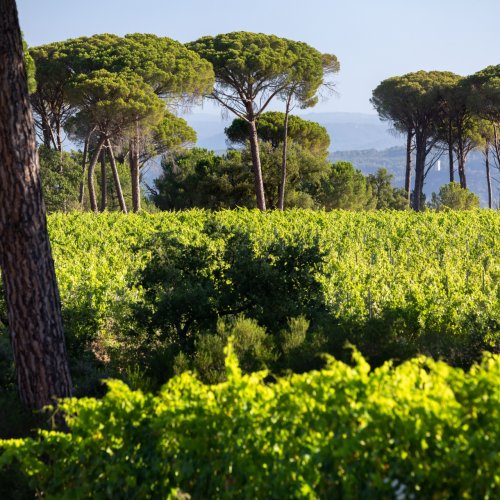News

Côtes de Provence Notre-Dame des Anges: A New terroir designation for the Côtes de Provence AOC

Tucked away in the heart of the Var department, the Notre-Dame des Anges wine region is the fifth terroir within the Côtes de Provence AOC area to achieve the status of terroir designation (In French: DGC ‘additional geographic designation’), assigned to terroirs with specific natural features and cultivation practices. The terroir designation was officially recognized by a decree published in the Official Journal of 10 August 2019, based on a positive recommendation from the National Committee of the INAO (French Institute of Origin and Quality). With harvesting already in full swing, the 2019 vintage will be the first for the Côtes de Provence Notre-Dame des Anges terroir designation.
Côtes de Provence Notre-Dame des Anges is the fifth terroir designation under the Côtes de Provence AOC (following in the footsteps of Sainte-Victoire, Fréjus, La Londe and Pierrefeu). Its name refers to the highest peak in the Massif des Maures mountain range, visible from all the communities in the terroir. Recognition of this terroir designation entails the application of more restrictive production rules for red and rosé wines, laid down in specifications approved by the INAO and namely including plot-based selection, choice of varietals, lower yields, and wine-making methods.
A singular terroir
The terroir covers 10 communities and 3,900 hectares of grapevines interwoven within the landscape of umbrella pines, oak trees and chestnut groves forming the Plaine des Maures National Nature Reserve. Multiple soil types are found there on top of Permian bedrock: sandstone, pelites, sand, old alluvial terraces of the Aille River, limestone and schist cap rocks and more. The climate is Mediterranean but with continental nuances, as the Massif des Maures protects the region from maritime influences.
2019: the first vintage under the terroir designation In the early stages of harvest, 2019 production numbers are expected to be between 3,500 and 4,000 hectolitres, according to initial estimates. As per the specifications, the rosés will be released to market on 15 December 2019, and the reds on 1 September 2020.
KEY FIGURES
THE WINE REGION
• 10 communities (Les Arcs/Argens, Carnoules, Taradeau, Vidauban, Le Cannet-des-Maures, La Garde-Freinet, Le Luc, Les Mayons, Gonfaron and Pignans) with a total of 3,900 hectares of grapevines
• 273 hectares: the total area identified by the INAO for the production of Côtes de Provence Notre-Dame des Anges AOC wines for the 2019 harvest
THE WINE INDUSTRY
• 5 cooperative wineries and 11 individual wineries will be able to produce 2019 vintages of Côtes de Provence Notre-Dame des Anges AOC wines VARIETALS & YIELDS
• 3 main varietals: Grenache, Cinsault and Syrah
• 8 ancillary varietals: Mourvèdre, Tibouren, Cabernet Sauvignon, Carignan, Clairette, Sémillon, Ugni Blanc and Vermentino
• Yield: 50 hl/ha (20 hl/acre)
RELEASE TO MARKET
• Rosé wines: 15 December of the harvest year
• Red wines: 1 September of the year after the harvest
NOTRE-DAME DES ANGES : A GROUP OF ENGAGED WINE-MAKERS
“After 15 years of comparative tastings, plot identification and the development of control batches, we have been able to bring the Notre-Dame des Anges terroir designation project to fruition, because the wine-makers all shared a common goal, based on a belief in the typicity of their wines. This area boasts special natural features, but it is also a terroir in the oenological sense of the term, because the way the producers work the land is reflected in the characteristics of the wines.”
Jean-Pierre Daziano, President of the Notre-Dame des Anges section of the Côtes de Provence Syndicate
AN UPGRADE PROCESS IN KEEPING WITH THE COTES DE PROVENCE AOC’S STRATEGY
“For many years now, the Syndicat des Vins Côtes de Provence has been engaged in the promotion of its terroirs through the identification of specific geographic sectors, an approach which has resulted in the recognition of five terroir designations in conjunction with local wine-makers. This strategy is part of a process to upgrade the appellation, with the aim of producing wines which are recognized for their quality and for the expression of their terroir.”
Eric Pastorino, President of the Côtes de Provence Syndicate